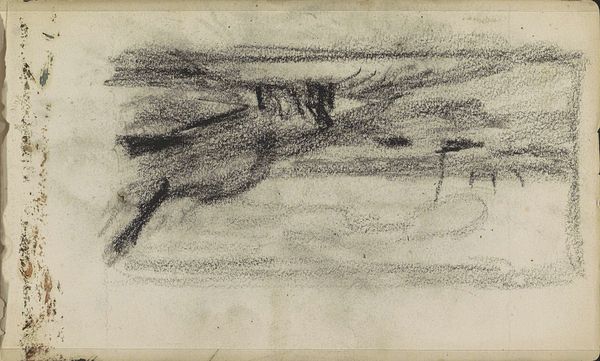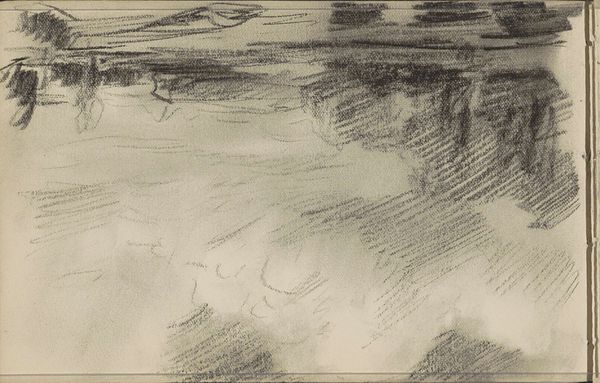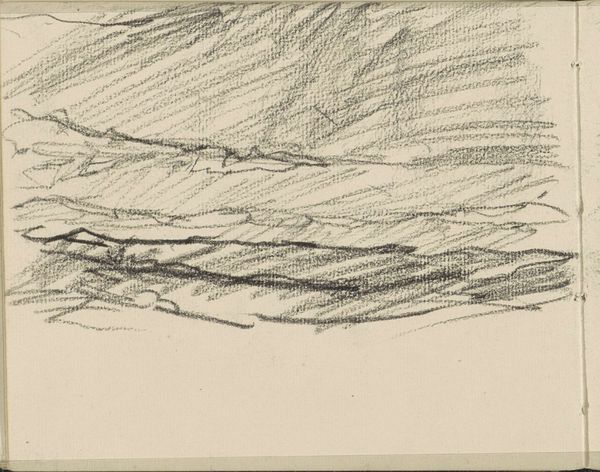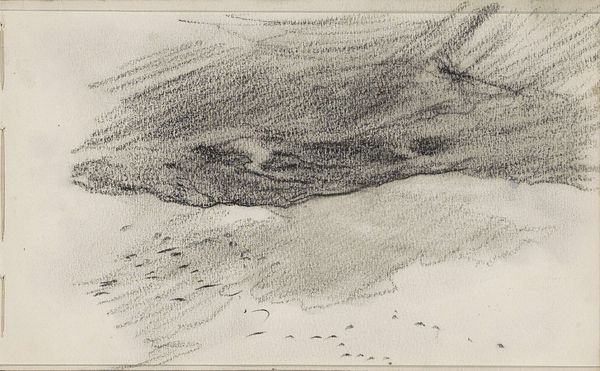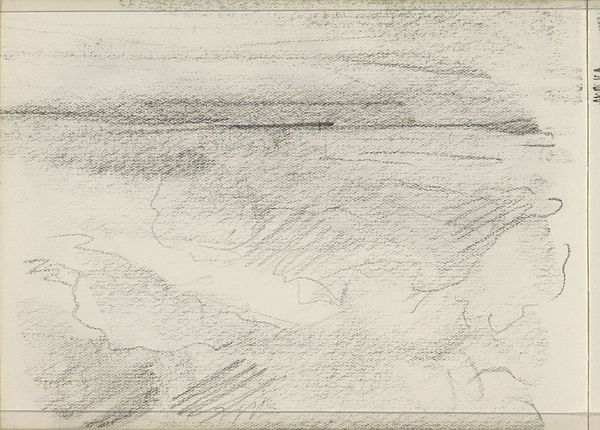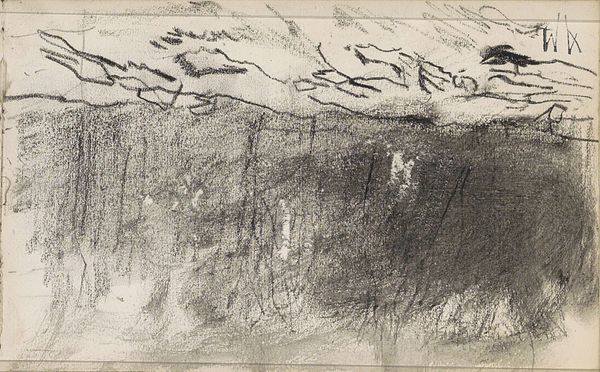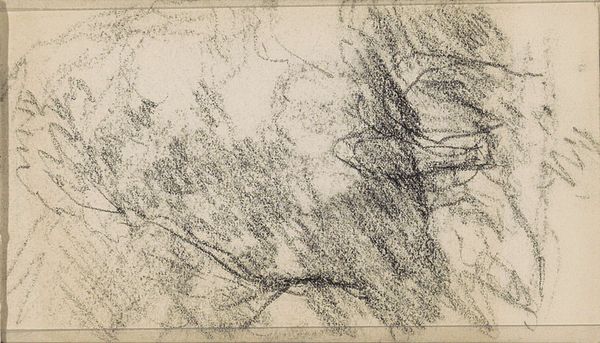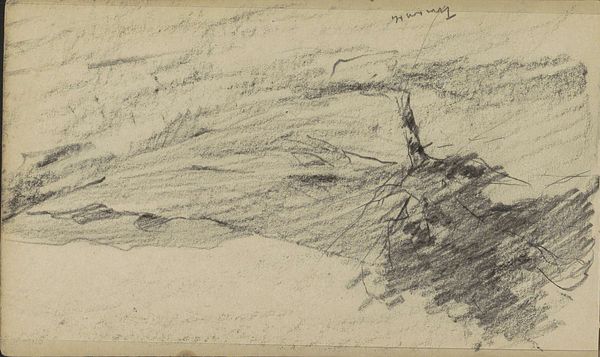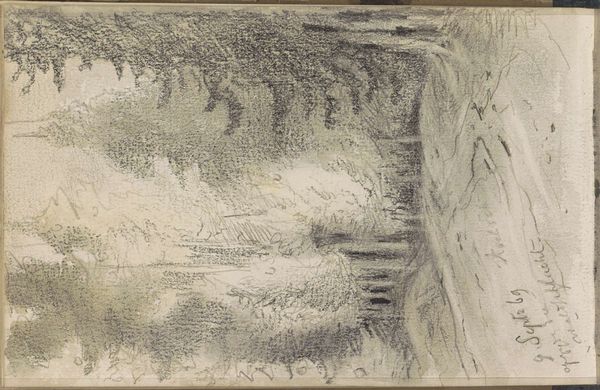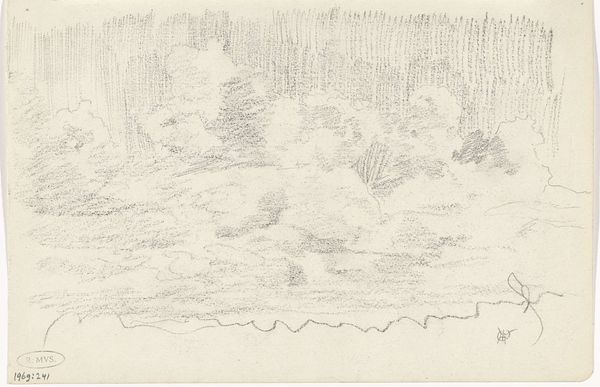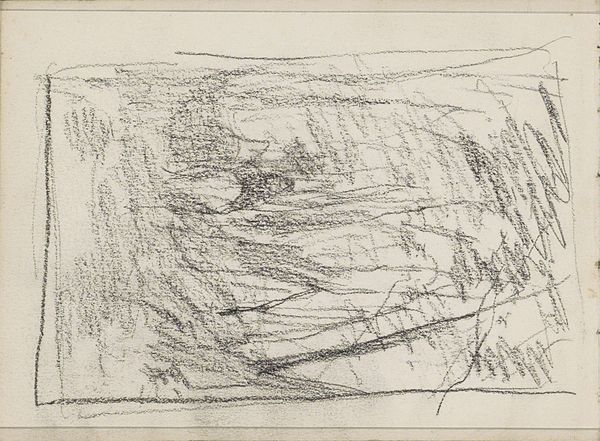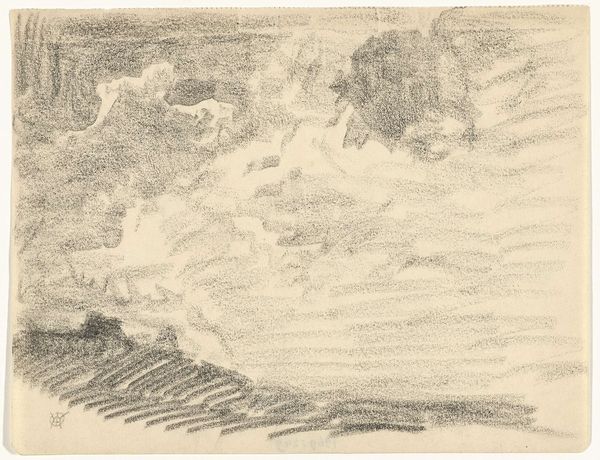
Copyright: Rijks Museum: Open Domain
Curator: This is "Duinlandschap," a dune landscape drawing created with pencil on paper by Johan Antonie de Jonge, likely sometime between 1901 and 1927. Editor: It looks so raw, doesn't it? Like a storm's just passed and everything is holding its breath. I can almost smell the salty air and feel that gritty sand between my toes. It's minimal but incredibly evocative. Curator: Precisely. The artist has masterfully used the simple medium of pencil to convey a sense of vastness and the ever-changing nature of the dunes. Notice the directionality of the pencil strokes. In the sky we can see how it moves diagonally across the scene and is a lighter value in comparison to the strong short horizontal markings forming the land. The formal elements suggest a constant movement, perhaps of wind and shifting sands. Editor: The limited palette really reinforces that mood too, all grays and whispers. And it's not polished, is it? You can almost see the artist wrestling with the subject right there on the page. Makes you think about being a witness, doesn't it? Like you're watching this place just *be* on the page. Curator: In terms of impressionistic landscape drawing, that haptic connection to the medium and place aligns with artists seeking to capture subjective responses to light and atmospheric conditions in ways that diverge from academic conventions focused on rendering observed form. Here, De Jonge creates a kind of open semiotic field where we are free to imagine what those sensations of the landscape would be. Editor: Maybe that’s why it hits me. You see a technical accomplishment. I'm here thinking about all those solitary walks along the dunes, feeling tiny next to something ancient and indifferent. Beautiful though, isn't it, that feeling? Curator: Yes, its power lies in its restraint and openness to interpretation. De Jonge invites a dialogue with the viewer through simple pencil marks. Editor: So, it seems a lot of what affects us happens in those suggestive spaces *between* the marks and details. I’ll never look at a sketch the same way.
Comments
No comments
Be the first to comment and join the conversation on the ultimate creative platform.
